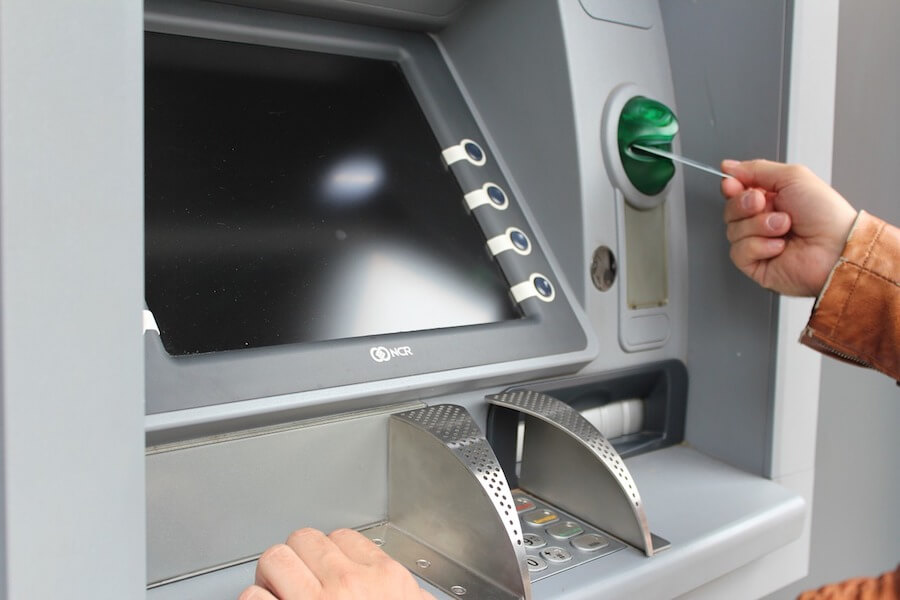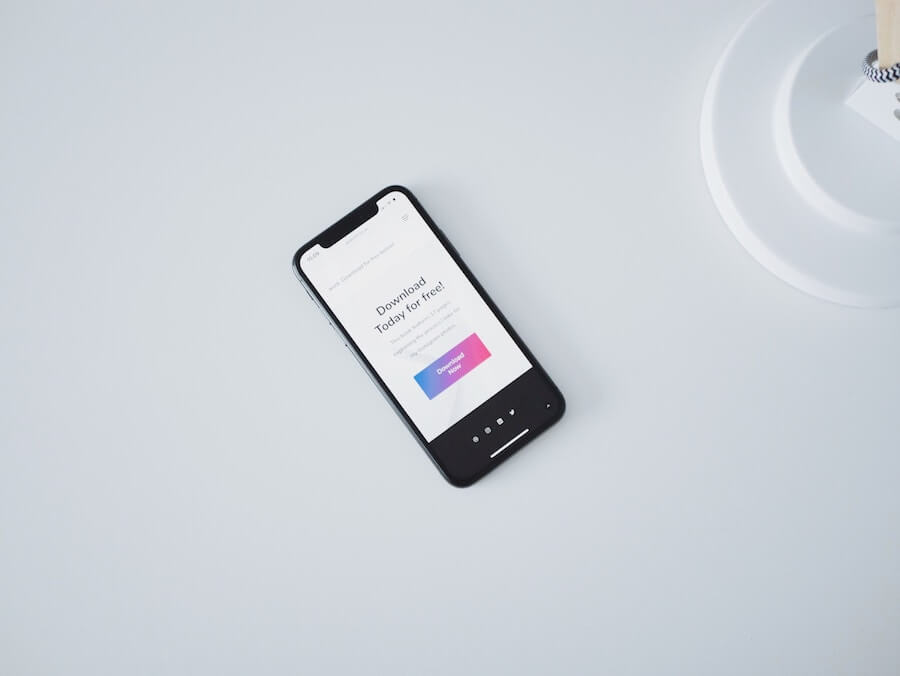1: Why CX matters in community banking
In a November 2017 Financial Brand article, customer data company NGData found that less than one third of banking consumers said their banking experiences improved. This is an alarming data point, considering the same banking survey from NGData found that 41% of consumers would switch banks due to bad experiences, up from 33% the year before.
As consumer expectations climb and competition grows, managing your bank or credit unions customer experience is critical for growth, competitive advantage, and long-term viability. But where do credit unions and community banks start? How does improved customer experience impact your financial institution and drive growth? How do you even get started with a customer experience program in banking? We’ll cover all this and more in our ultimate guide to Customer Experience for banking.

Research has shown that investments in customer experience programs has paid significant dividends for community banks. Investing in customer experience yields returns in several areas, including:
- Increased loan balances: Members are more likely to borrow from a bank they feel they have a relationship with and is doing good for the community they serve. For many members, a competitive rate from a bank where they have had a positive customer experience wins over borrowing from a new bank with a lower rate. Banks have seen increases of over 10% in average loan balance per member by investing in CX.
- Increased deposits: Members are more likely to centralize their deposits in a bank where they have had a consistently positive relationship (especially if they also consider the bank easy to do business with requiring low customer effort). Banks have seen increases of over 15% in average monthly deposits per member by investing in CX.
- Reduced customer churn: While only 11% of members change banks in a given year, it is still a tremendous area of growth if your bank is at or below the average. Members with good historic experiences stick around longer. They are more resistant to conquest offers and more likely to try distance banking when they move.
Community banks see other benefits as they increase their customer experience scores and deal effectively with customers who raise concerns. Benefits include increased cross-sell in a number of products, higher retirement contribution, and greater customer participation with referral programs.
Bonus: Download our Banking CX Money Map, an inside look at the CX impact in banking.
2: CX defends from fintech
One of the most important questions a community bank can ask is, “Am I earning my customers’ next dollar?” While retention is important, it tends to be very high in this vertical, so the real question is, “Are you growing your relationships with customers over time?” Many customers don’t feel a strong relationship with their bank: 33% of customers say all bank brands are the same (source: Forrester podcast 8/23/17).
Risk of emerging player
While retention is high in the sector, one of the greatest threats to established banks and credit unions is an emerging player, a tech-enabled financial service startup. As of Q3 2017, there were more than 5,000 fintech companies operating across 16 categories. While many of these are startups, established technology firms like Apple and Google pose an additional threat. Already over half of U.S. banking customers would consider buying a “new financial product from an established technology firm”.
This new class of tech-enabled financial service companies are opening up new categories and bringing nimble customer and user experiences with them that consumers have come to expect in an Amazon and Google world.

Retention in retail banking is high
While the banking and credit union industry is under attack by outside innovation, retention is still very high, approaching 90%.
A 2015 report from Accenture found that lack of quality, service, and experience are one of the top three leading factors to drive a banking customer to make a switch, leading banks to choose CX as both an offensive and defensive strategy.
3: Simple start to a CX program
Although it can be tempting to want to dive in and create a robust customer experience program right from the start, that’s a big undertaking. It’s okay to start small and expand. Consider starting with one touchpoint or one specific product, like a new car loan. There are ample examples of banks solving customer experience challenges, a step at a time. You could even start with a customer episode like disputing a fee, and expand from there. Regardless if you start small or tackle a major program, your first program should have three parts.
- Ask. You need to start by understanding the customer relationship. However, customers don’t want to take a long, non-personalized survey. Feedback collection should be broken up into easy, fast pieces by establishing triggered surveys after key touch points such as opening a new account or closing on a new loan. You should keep surveys short and simple to keep response rates high. Leveraging the information you have on the customer will help you personalize the survey. Personalizing the survey based on the data you have available will help keep customers engaged. Also, making sure that surveys are mobile friendly will increase response rate, so customers can take them anywhere.
- Act. If you uncover that a customer’s response is not up to standard when soliciting feedback, quickly follow up with that customer and close the loop. There are several ways to close that loop. For example, high value customers should likely get a call from the bank manager. As always in customer experience, speed is key to customer satisfaction. When Centriam asked customers about a recent problematic experience, 4 out of 7 said they expected follow up within a day. With speed being at the forefront of customer needs, this is often a change you can make quickly and see tangible results within weeks. Sound too good to be true? To track improvements for your pilot program, set up a control — don’t follow up with a random 20% and monitor customer satisfaction across the board. You just might be surprised at the results.
- Advance. Your customer experience program should be an ongoing, iterative process. Expanding and improving the program over time is critical to longevity and success. Results should be continually monitored and expectations met. As your program continues, it’s important to add additional touch points over time. This would be the time to cover any missing common events, such as opening a new checking account or money transfers to another institution or entity. Once all the basic events are covered, you can expand your program to cover other rarer items like replacing lost credit cards, discussing unrecognized transactions, or refinancing a mortgage. While these events are not as common, they often are more emotional. With emotion comes the opportunity to both delight and frustrate your retail banking customers. As results accumulate, you will want to share the results and trends with process owners at your bank. This is not to point fingers, but to see if process enhancements can be made that will eliminate issues at the source.

4: Closing the loop is key for community banks
Acting on the feedback you receive from customers is essential to a successful customer experience program. If you take the time to solicit feedback but don’t take action, you are not only doing a disservice to your customers, but to your bank. Effective follow up is critical for two reasons:
- It shows the customer you care. By listening to your customers and meeting or exceeding their expectations with a timely appropriate response from your team, your customers will know they are valued and heard. As we mentioned earlier, when Centriam asked customers about a recent problematic experience, 4 out of 7 said they expected follow up within a day, but we can’t stop there. Not only does the timeframe in which you respond matter, so does the method of communication. Make it as personal as possible. Customers prefer to handle issues and disputes with people either in person or on the phone, not with technology. If you’re a bank not yet equipped with digital platforms, chatbots, or real-time loan approval, this is your chance to shine! Delight your customers with a personal touch.
- It fuels growth by diminishing lost opportunities. Truly listening to your customers and investing in customer experience supports business and customer growth. When you give the customer a voice, you gain insights and prevent lost revenue by potentially recovering lost product sales, or even more severe, lost customers. It’s your chance to turn a negative experience into a positive one and “right the ship”. And as always, speed is critical on both fronts. A strong customer experience program allows you to get results fast, often within weeks of implementation for a given product or service.

Hopefully by now it should be clear how critical closing the loop is to the success of your customer experience program. However, it needs to be done at scale. In order to close the loop effectively and at scale, you need a technology supporting you that allows for a few things:
- Routing the customer feedback in real time. As we’ve previously stated, customers’ expectations around a timely response are high: most want a response within 24 hours. If you want to take it up a notch and really “wow” a customer and have them feel listened to, follow up on their survey within minutes. The right technology can make that happen.
- Prioritization. Following up on all customers within minutes might not be feasible, but it might be for a specific subset of your customers. This is where a technology is needed that supports both real-time feedback and prioritization. Break out customers into new account holders or platinum customers — whatever customer group is most important to your strategy — and prioritize from there.
- Easy adjustment. It needs to be easy to change routing and prioritization rules. Technology that is rigid and can’t account for real-world scenarios doesn’t do anyone any good. For example, is the branch manager on vacation for two weeks? Your technology should be able to support changing the routing in seconds to redirect to the care center for that fortnight.
5: CX platform selection criteria
There are many technology options in the marketplace. In fact, Scott Brinker’s most recent Marketing Technology Landscape famously touts 5,381 different software solutions. At first glance, it’s overwhelming, but if we first break it down by what we aren’t looking for, we can narrow the playing field quite a bit. Then, you are on your way to picking the right CX tool. Based on what we have discussed:
You don’t want a CRM tool. Selecting a technology that mainly functions as CRM will leave you falling short and likely challenged when trying to implement your customer experience program. The shortcomings are:
- Interfaces are often complex since they are designed for specialized users.
- Reporting is absent to understand an individual customer and improve live interaction.
- Lack of data integration capabilities with operational data sources, plus frequent reliance on data updates, which is too slow for customer experience follow up.
- Lack of capabilities to accommodate person-to-person communications.
You don’t want a survey tool. Most survey tools are not able to get you the vital information you need to make the best customer experience decisions for your business. In order to transform your business into a culture that embraces and is at the forefront of gathering customer feedback and insights, you’ll need a bigger, more powerful customer experience platform tool to close the loop and maintain all your data.
To make informed decisions driven by data, you’ll need the entire connected customer experience view. Survey tools are not designed to get you the “big picture” of your entire organization. Getting a survey back that is reported in isolation regarding customer feedback can hinder the customer experience decision-making process.
Now that you know you need more than just a CRM and more than just a survey tool, let’s talk about what else you should be looking for in a platform. Customer experience systems are actively evolving right along with your bank’s needs. The customer experience technology for retail banking should be centered around ease of implementation and ease of use to support those needs.

Must be easy to Implement. When selecting a technology to power your customer experience platform, you have to consider if the solution is easy to implement. Needs are ever-changing and you need a tool that allows your team to move quickly. Here are a few questions to ask prior to platform selection:
- Can you set up a POC in a day or less?
- Can that POC be a triggered campaign from one of your existing data sources?
- Can you create your survey? Can you brand it?
- Can you direct negative responses to yourself or your care team for follow up?
- Can you create a follow-up form (a simple follow-up ticket)?
Must be easy to modify to your growing needs. As we’ve stated, your customer experience program should be an ongoing, iterative process. Expanding and improving the program over time is critical to longevity and success. Your bank needs a technology that is able to support that and accomplish the following with ease:
- Use additional data sources to cover additional touchpoints as you expand your program over time.
- Create additional surveys specific to those touchpoints.
- Create additional rules to intelligently direct more feedback.
Selecting technology doesn’t have to be an arduous process. Centriam is a customer experience management platform built for businesses of all sizes to better manage and improve customer relationships. Centriam redefines how companies manage their customer experience efforts.
Our platform enables companies to track customer behavior and collect customer feedback across channels. It empowers companies to analyze and act on all data and measure the impact of customer experience campaigns on customer behavior. Centriam is designed for customer experience and marketing professionals who want to delight their customers.






